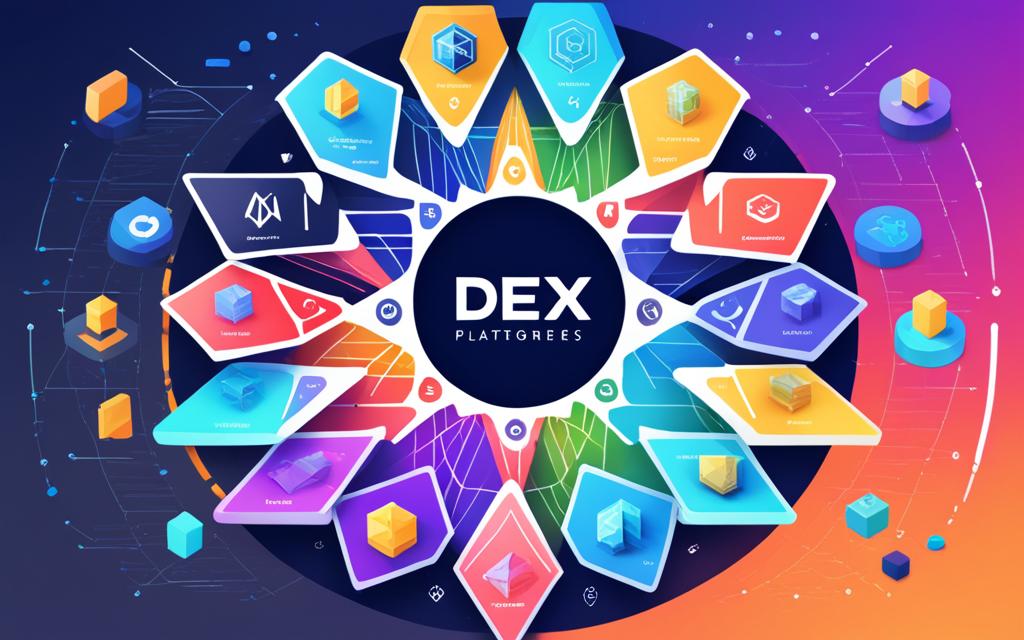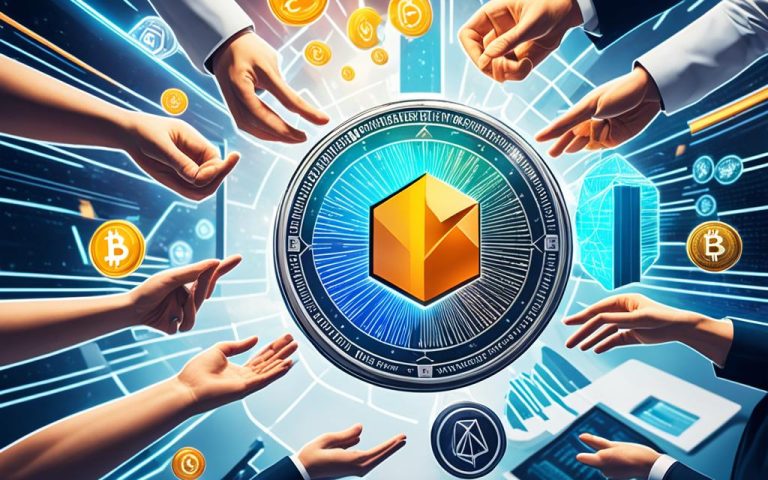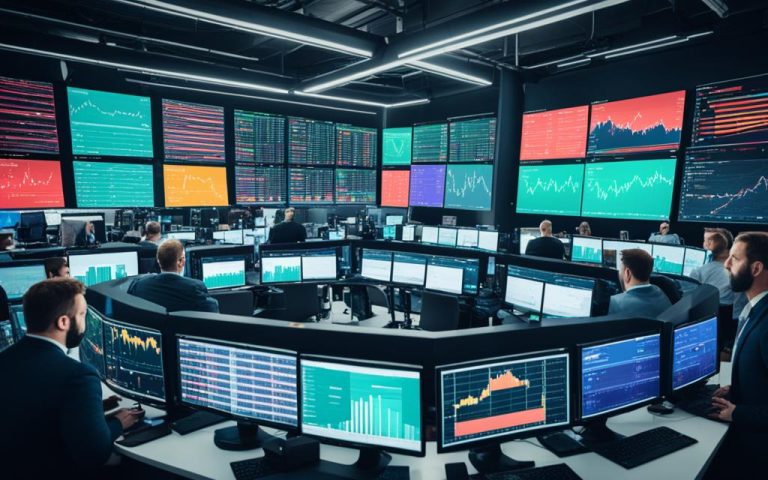A decentralized exchange (DEX) is like a regular market but operates online without bosses. It lets people trade digital currencies directly. This setup means there’s no middleman holding your money or keeping tabs on debts, which makes your funds safer and under your control.
People choose decentralized exchanges because they want to manage their money themselves. They aim to avoid hacks, keep their transactions private, and enjoy trading without revealing their identity. The leading DEX crypto platforms provide various features to meet the needs of different traders.
Uniswap, started in 2018, works with many chains including Ethereum and BNB Smart Chain. It has locked in funds worth $5.53 billion. It stands out as a top DEX platform, offering traders an easy and effective way to trade across different chains.
Curve Finance began in 2020, mainly using Ethereum alongside 12 other platforms. With $2.23 billion in funds, it focuses on trading stablecoins. It uses a special algorithm to help users trade more efficiently and with less price difference.
PancakeSwap, opened in 2020, serves users on Binance BSC, Ethereum, and other chains. It has about $2.23 billion locked in. Known for its fun features and appealing design, PancakeSwap has become popular among traders.
Other key DEX platforms include Balancer and SushiSwap, both started in 2020. Balancer works on several chains, has $1.05 billion locked in, and supports up to eight tokens in pools. SushiSwap operates on 19 chains with a total value of $341 million, offering flexibility in chain support.
Decentralized exchanges give traders the control and flexibility they want. While centralized exchanges improved their security, DEXs lower the risk of hacks. They also have similar trade fees to centralized ones, between 0.1% and 0.3%.
The crypto world keeps growing, and DEX platforms are vital in giving users the power to trade securely and privately. From direct trades to unique trading features, DEXs provide an engaging and different choice compared to traditional exchanges.
Overview of Top DEX Crypto Platforms
Decentralized exchanges (DEXs) have changed how we trade cryptocurrency. They offer more control, transparency, and security. This section looks at top DEX platforms. These include Uniswap, Curve Finance, PancakeSwap, Balancer, and SushiSwap.
Uniswap: Empowering Token Swapping with Liquidity Pools
Uniswap is the biggest decentralized exchange known for token swapping. It’s built on Ethereum and supports ERC-20 tokens. It works on several chains like Arbitrum, Polygon, Avalanche, and more. Uniswap gets rid of middlemen, making trading efficient. Its liquidity pools let users easily swap tokens. Users can also earn by adding liquidity. High trading volumes and an easy interface make Uniswap a top choice.
Curve Finance: Optimized for Stablecoin Trading
Curve Finance is great for stablecoin trading. It offers low fees and competitive returns. Curve makes stablecoin trades smooth, with little slippage and low costs. Its top-notch security audits make it a safe place to trade. This draws in lots of traders and keeps the ecosystem secure.
PancakeSwap: High Liquidity on Binance Smart Chain (BSC)
PancakeSwap runs on the Binance Smart Chain. It offers low fees and high liquidity for BEP-17 tokens. Being an alternative to Ethereum platforms, it’s known for efficient, budget-friendly trading. Its automated market-making mechanism smooths out trading. It also lets users trade and earn rewards in liquidity pools.
Balancer: Exchange and Portfolio Manager Combined
Balancer mixes an exchange with a portfolio manager. Its liquidity pools offer access to many crypto assets. Users can make portfolios with different weights. This lets traders and investors diversify and earn fees. Balancer’s unique approach and management flexibility have made it popular in the crypto world.
SushiSwap: Versatile DEX Supporting Multiple Chains
SushiSwap stands out for its support of many chains. Users can trade assets across various chains and get into yield farming. It started as a clone of Uniswap but has become its own platform. With features like Kashi lending and BentoBox, it’s grown despite having less TVL. It keeps evolving and drawing a dedicated user base.
Each DEX brings unique advantages for different trading needs. From high volumes and easy swaps to custom portfolio management, these platforms use smart contracts and liquidity pools. They empower people in the decentralized finance (DeFi) world.
Decentralized Exchanges and Their Operations
Decentralized exchanges, or DEXs, have changed how we trade cryptocurrencies. They bring more security, openness, and control. They use tech like AMMs and smart contracts for easy token swaps.
AMMs let DEXs have liquidity pools for trading without traditional order books. Liquidity providers, or LPs, add tokens to these pools and get fees as rewards. Exchanges like Uniswap and Curve are popular because they have a lot of liquidity and are easy to use.
With DEXs, you can swap tokens straight from your wallet. This cuts out middlemen and custodial exchanges, lowering the risk of hacks.
DEXs keep trading pairs balanced for smooth swaps. They support many cryptocurrencies, making trading easy. Exchanges like 1inch use an aggregator model for a bigger choice of tokens.- I will clarify my instruction after going through the XML. “Delete those sentences that are repetitive in meaning.”
DEXs also tackle the problem of high fees seen in centralized exchanges. They have low gas fees, saving money for traders. For example, Curve charges about 0.04% in fees, making it great for stablecoin trades.
DEXs offer ways to earn through LP rewards and governance. By providing liquidity, LPs earn from trading fees. Governance tokens like UNR, CRV, and BAL let users help make decisions and earn rewards.
The popularity of DEXs shows a move towards decentralization. They’re seeing more trading, showing more trust in DeFi. With their focus on keeping things safe and transparent, DEXs are changing how we trade cryptocurrencies.
| DEX | Total Value Locked (TVL) | Market Cap | Trading Volume |
|---|---|---|---|
| Uniswap | $6.25 billion | $5.64 billion | Exceeding $1.5 trillion |
| Curve | $2.4 trillion | $729 million | $139 million |
| PancakeSwap | $2.4 trillion | $943 million | $597 million |
| Balancer | $1.25 billion | $274 million | $1.22 billion |
| SushiSwap | $403 million | $356 million | $21.95 million |
These DEXs have impressive stats, showing they’re key players in the market. As DEXs get more popular, the value locked in DeFi is over $100 billion. This shows their big impact and growing acceptance.
DEXs use smart contracts to change crypto trading. They offer security, low fees, and empower users. As crypto evolves, DEXs will be crucial in the future of finance.
For more information on top decentralized exchanges, have a look at these reputable sources: coinledger.io, solulab.com, kucoin.com.
Conclusion
Decentralized exchanges, or DEX, are changing the crypto market big time. They stand out by being open, safe, and giving users the reins. Users don’t need middlemen, so they have full sway over their assets and deals.
We looked at the best DEX crypto spots in this article. Uniswap, PancakeSwap, and SushiSwap are among the favorites. They let users trade easily without central control. These places offer a lot for investors, traders, and those providing liquidity.
The future looks bright for decentralized finance, drawing in people who dig the idea of being in charge. Yet, DEXs have hurdles like scaling up and making things easier for users. Still, they could totally change how we deal with digital money.
If you’re into crypto or just getting started, checking out D The DEX world is worth your time. Dive into decentralization, learn about cool new chances, and be part of the community driving finance’s future.
FAQ
What is a decentralized exchange (DEX)?
A decentralized exchange, or DEX, is where you can trade cryptocurrencies directly with others. It doesn’t have a central authority managing things. This lets everyone trade directly with each other.
How do decentralized exchanges differ from traditional centralized exchanges?
DEXs don’t control your money or keep track of your trades like centralized exchanges do. This means you have full control and security over your own funds.
Why do people use decentralized exchanges?
People choose decentralized exchanges for more control and safety over their money. They also prefer the privacy and secrecy these platforms offer.
What are some major decentralized exchanges?
Well-known decentralized exchanges are IDEX, Bancor, and Binance DEX. Each offers different benefits and draws a lot of traders.
What are the trading fees on decentralized exchanges?
The fees for trading on DEXs usually fall between 0.1% and 0.3%. These rates are similar to what centralized exchanges charge.
Are decentralized exchanges more secure?
DEXs are generally safer from hacking because they’re decentralized. However, some have faced security issues in the past.
How do decentralized exchanges operate?
They run on a network of nodes, spreading out their operations. This helps reduce the downtime that centralized exchanges can face.
Which is the largest decentralized exchange?
Uniswap is the biggest at the moment. It supports ERC-20 tokens and works on multiple blockchain networks. It’s popular for its high trading volume and liquidity pools.
What is the focus of Curve Finance?
Curve Finance is all about stablecoin trades. It offers low transaction fees, good returns on crypto, and keeps things secure with regular checks.
What is PancakeSwap?
PancakeSwap is a decentralized exchange that runs on the Binance Smart Chain. It’s known for its low fees and great liquidity for BEP-20 tokens.
What is unique about Balancer?
Balancer offers a mix of an exchange and a portfolio manager in one. It lets users create and manage crypto asset pools with different fee options.
How is SushiSwap different from Uniswap?
SushiSwap supports more blockchain chains than Uniswap, giving users more flexibility. Yet, it had less total value locked (TVL) compared to others in 2024.
What are the primary operations of decentralized exchanges?
They use Automated Market Makers (AMMs) for trading. This means smart contracts manage the liquidity pools where trading happens.
How do liquidity providers earn rewards on decentralized exchanges?
Liquidity providers earn by adding tokens to pools. They get rewards, mostly from the trading fees that users pay.
How do token swaps occur on decentralized exchanges?
Swaps happen directly between wallets and pools, with no middlemen. This allows for trading that you control entirely.
What advantages do decentralized exchanges offer?
They’re great for avoiding price changes during trades and offer low transaction costs. This makes them ideal for big trades and quick transactions.
What role do LPs play in decentralized exchanges?
LPs are crucial because they provide the funds needed for trading. They earn passive income by putting in an equal value of both tokens in a pair.
Q: What are governance tokens in decentralized exchanges?
Tokens like UNI, CRV, CAKE, BAL, and SUSHI give you a say in the DEX’s decisions. They encourage people to participate and help guide the platform’s future.



















